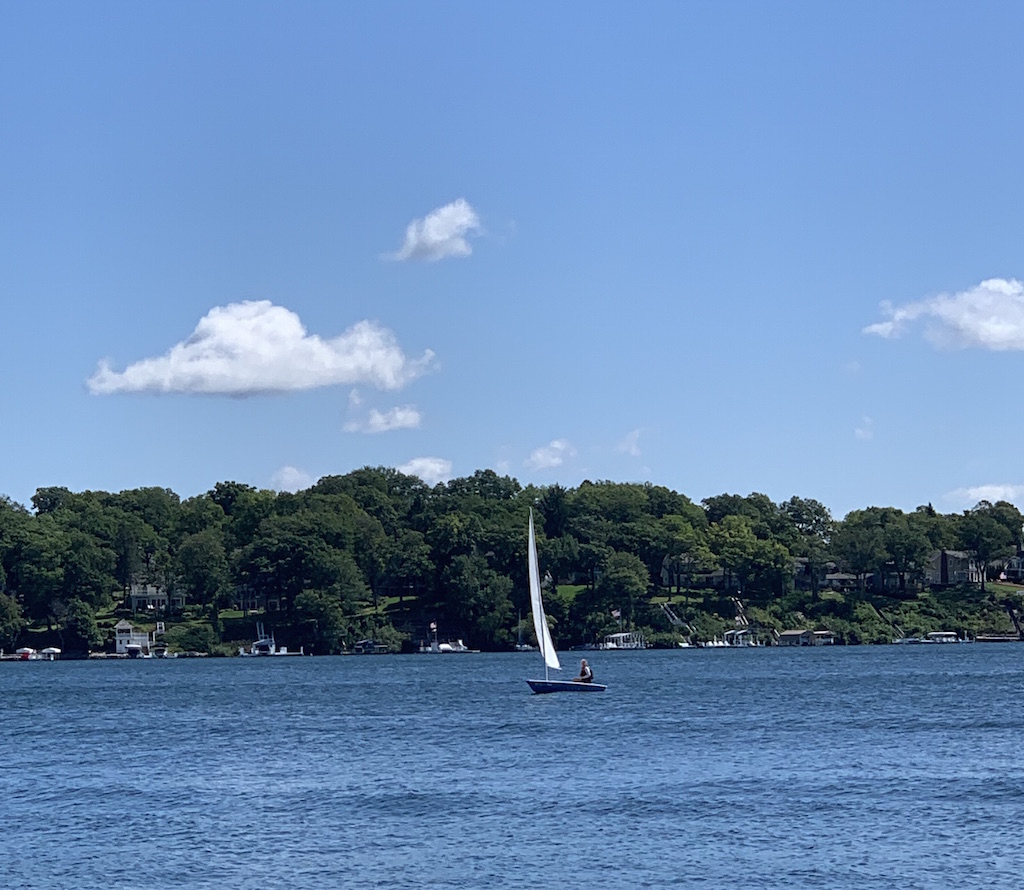Well, it feels like we’re about to see some more inventory. There’s a new lakefront listed under our MLS’s Delayed heading, which is category I’ve never used and never will use. There are rumors of other new listings coming, and I know I’m personally working on selling an off-market lakefront on the west end of the lake. The question, as it will be with all listings in all markets and at all times: What’s the price?
The answer is going to be simple and likely uniform and it’s going to be more than you think. Pricing trend? More. Do you care? Do most buyers care? I can’t exactly tell. The way I approach the valuation of real estate at the lake is somewhat complex. It’s not as complex as the person who sees sales on Zillow and guesses value, but it’s still complex. That’s because the math of the sale matters on multiple levels. The averages of prior sales and of active listings and of expired listings all matter, as does square footage and front footage and location. But price points matter, too, because a house that’s worth $15M might also be worth $20M, but a house that’s worth $3.5M is not similarly also worth $4.6M. Or is it? Beyond those conventional valuation metrics there is nuance here, and it’s that nuance that just might be ignored by the naiveté of some of our newest market participants.
If a “nice” house on a 50′ lot in a “bad” location can sell for $4.9M now, what does that do to the value of a “bad” house in a “nice” location? Does it mean it’s worth $4.9M? Or is it worth $3.9M? Or does location trump all, and that bad house is worth $5.5M? These are the questions the market is struggling with, and I have a theory about this year that suggests no one knows what the outcome is going to be. The easiest path for the valuation of real estate is to aim high. If you aim high and you miss, you just have to reduce your price and admit your fault. The Overton Window suggests this isn’t a terrible pricing strategy, and I’d bet we’re going to see plenty of overshot listings that are followed up with price adjustments. If your house is worth $5M, maybe listing it at $7M is a good idea. Because then you can reduce to $6.5M and look like you’ve created a “deal”. Some buyers will be fooled.
Maybe I’m wrong, and maybe the pricing is going to be something that more closely resembles an accurate target. If you’re a buyer, I wouldn’t count on it. The problem, as with all small markets like Lake Geneva, is that we don’t need a market consensus to drive pricing. We just need outliers on top of outliers until they’re just viewed as the truth. If a property hits the market for $7M, we can assume the lake currently has 20 active buyers in that price range. If 19 of those buyers laugh at the price and pass on the listing, what happens? The answer might be that the 20th person buys it for $7M. The comp is set, the market moves on. This is the issue with a low volume market, and it’s a reminder that being right about pricing doesn’t always mean that the outcome matches your conviction. It can be true that a $7M home might sell and still might be overpriced.
When I represent sellers I seek to find the balance in pricing the property to the maximum of the market tolerance while still justifying the price relative to comparable sales. Without the latter, it’s just a guess, and as I’ve repeatedly reminded the market, the worst case outcome of a grossly overpriced offering is not that it doesn’t sell. The worst outcome is that it often sells for less than it might have sold for if the initial price was accurate. This might be a game, but like all good games, there are rules. If you’re trying to figure out those rules on the supply or demand side, I’m here to help.
Above, my daughter sailing.

